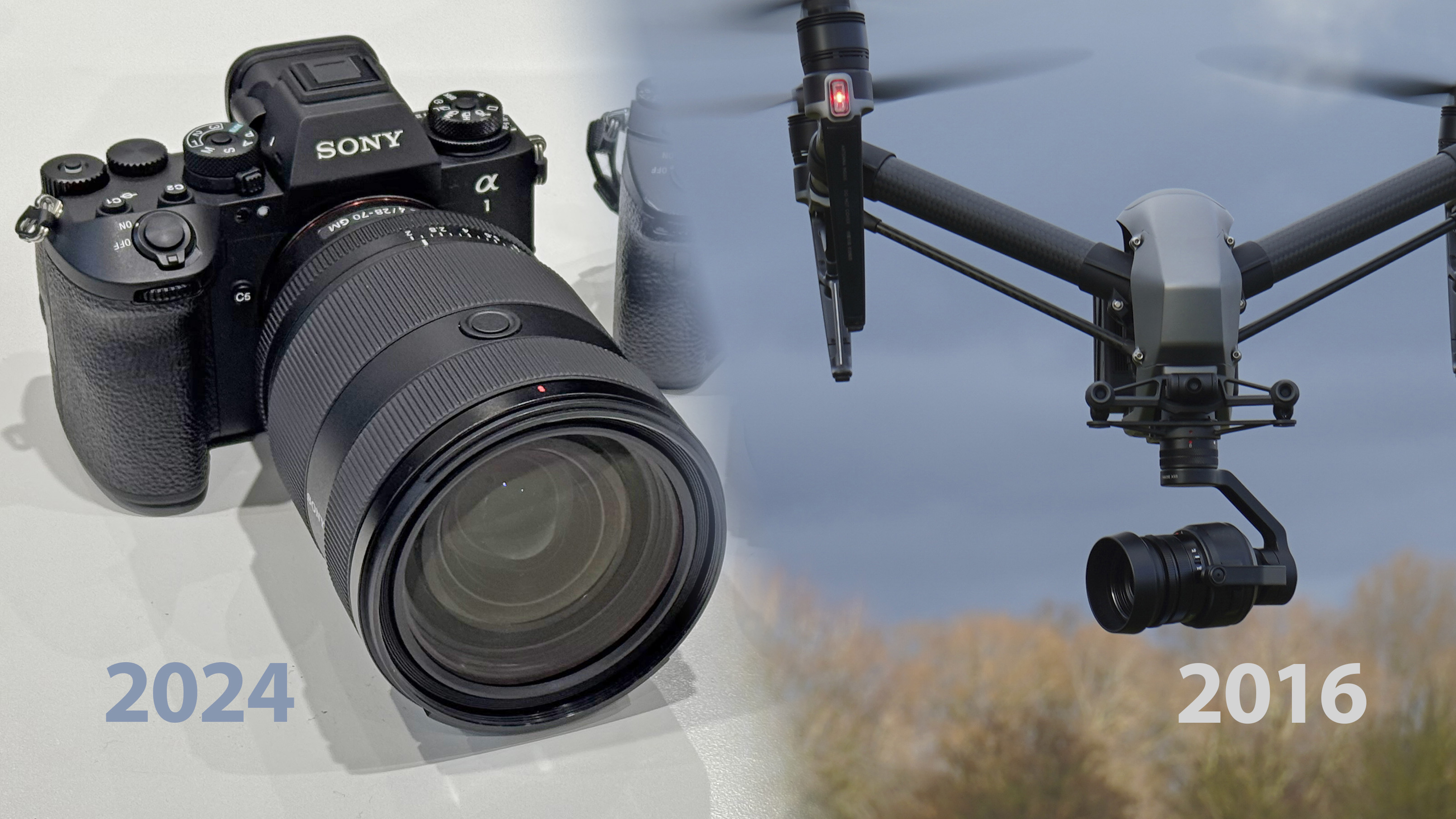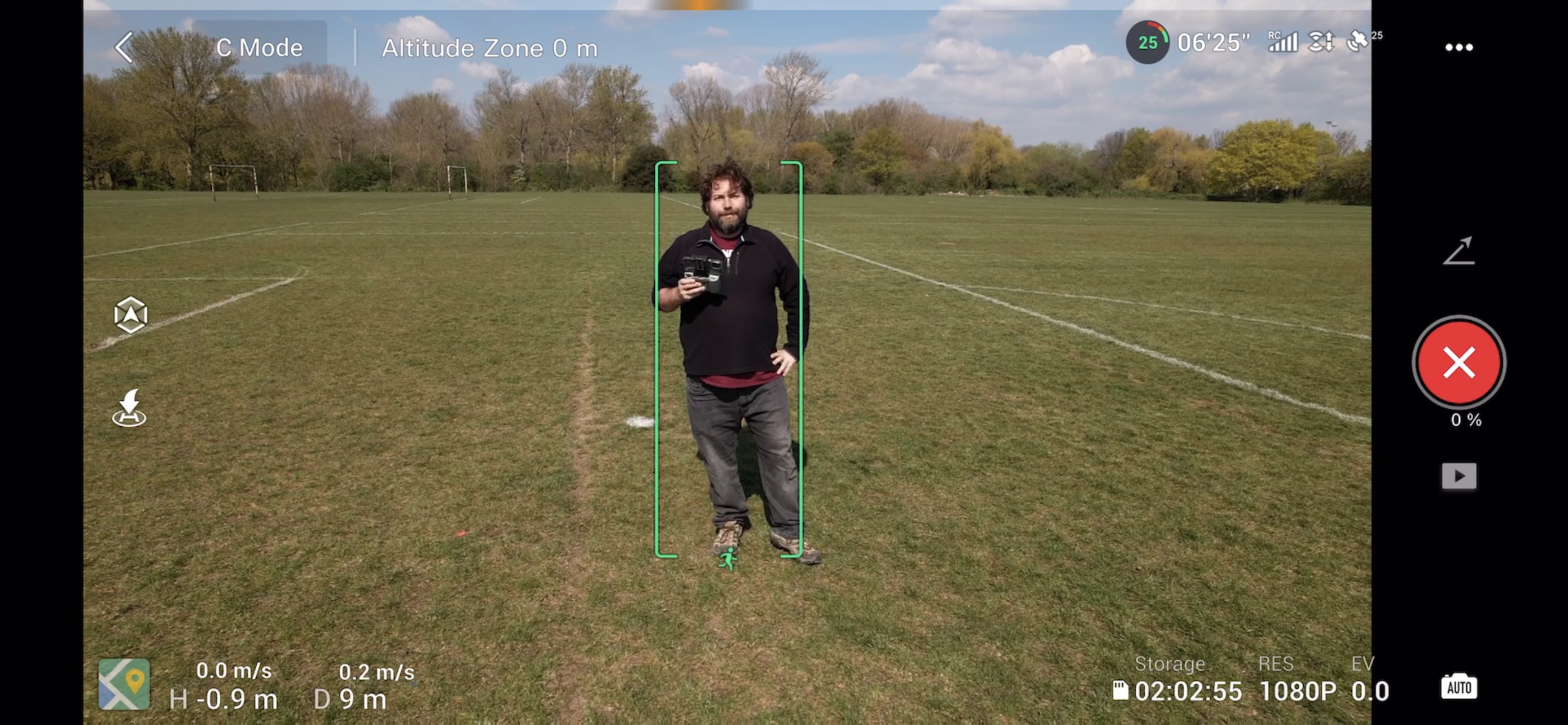Is Sony A1 II the "first" camera with object recognition? My camera can already do that, and it can fly too!
There's a row about whether the new Sony A1 II is actually the first camera with object recognition – not least from Fujifilm owners – but my drone could do this years ago!

When you're a drone expert, sometimes you forget just how far behind real cameras can get. After all, my camera can fly. Beat that! 😀 Seriously – as a Sony shooter content to sit with the distinctly mid-table A7 III – I was genuinely surprised about the excitement surrounding the arrival of the new top-tier Sony A1 II and the "big new feature" that is AI object recognition.
I held it in my hands for only a few precious moments, because reviewing it is best left to my colleagues but – as I helped capture a clip from our TikTok so reviews editor Gareth could appear in shot – I realised that drones had been doing something
Not so long ago I did regular professional drone work with with a DJI Inspire 2, which cost about the same as the Sony A1 II, (admittedly its replacement, the Inspire 3, comes in at rather more!) and that drone was first launched in 2016. It featured something called 'ActiveTrack', which the drone used to identify a subject and focus on it and it didn't need to be told what the object was.

Now, OK, that's a bit different – I admit it. For one thing, when you're flying a drone, the chances are that the focal range is such that the whole object will likely be in focus either way. The point of the AI on the Sony is about making sure that the shot is tailored to identify the best point to focus on. But, still, that matters to drones too, and this was shown in the 2021 Air 2S (recently replaced by the brilliant Air 3S which still has the tech).
The new Sony camera is worried about whether an eye will be pin-sharp, so working out whether the subject is a person, an animal, or a train matters, but there is a subsequent step going on inside,
From the drone's perspective, identifying the subject is more about telling the drone how to behave – when 'ActiveTrack' identifies different subjects (Car, Bike, Person) it will plan different flight paths to best keep a steady shot
Still, the point is that – in either case – the tech is smart enough to identify the subject of its own accord (you don't have to tell DJI's ActiveTrack the difference between a car and a person). Each device can then do what's best using that identification, and, to be fair, DJI was there well ahead of Sony or the 2023 Fujifilm X-S20 which also has automatic subject detection.
Get the Digital Camera World Newsletter
The best camera deals, reviews, product advice, and unmissable photography news, direct to your inbox!
Admittedly, amusingly to me, DJI's tech might not spot as many things. It couldn't recognise an aircraft and thought it was a vehicle – I found this when testing the Air 3S, with permission, in a safe area of an active airfield. I suspect this isn't something DJI expect goes on a lot when they're training their AI, and might even not wish to encourage!
I'm not saying it's not a useful technology, but I don't know if it'll change the world. When I'm flying, I still often prefer to pilot manually. Well done to Sony for drawing attention to it but, personally, when it comes to on-the-ground camera tech I was a little more excited by Canon's eye-tracking AF.
Either way, if you want this tech for rather less than Sony is charging, you'll find it on most of the DJI offerings in our guide to the best camera drones!

With over 20 years of expertise as a tech journalist, Adam brings a wealth of knowledge across a vast number of product categories, including timelapse cameras, home security cameras, NVR cameras, photography books, webcams, 3D printers and 3D scanners, borescopes, radar detectors… and, above all, drones.
Adam is our resident expert on all aspects of camera drones and drone photography, from buying guides on the best choices for aerial photographers of all ability levels to the latest rules and regulations on piloting drones.
He is the author of a number of books including The Complete Guide to Drones, The Smart Smart Home Handbook, 101 Tips for DSLR Video and The Drone Pilot's Handbook.
